Many fishermen think that representatives of the Salmonidae family are the only fish that inhabit seas, lakes and rivers. They are sure that there is nothing more there, except for the ichthyofauna. Fish is salmon, that’s it. Some people can be touched, when they hear this approach, others ridicule or respect such fishermen. Anyway, the fact remains the same.
Images of these fish can be found on fragments of rock paintings of our ancestors, as well as on the coats of arms of administrative units of various states.
Some fishing styles occurred due to salmons, for example, a certain caste of fly-fishers.
Nowadays, modern ichthyologists keep rethinking much and changing previous classifications of salmon, like gamblers shuffle decks. Of course, adriaticnature tries to keep track of events. However, keeping track of all the changes in the fish taxonomy is the job of scientists. It should be observed only occasionally and from outside.
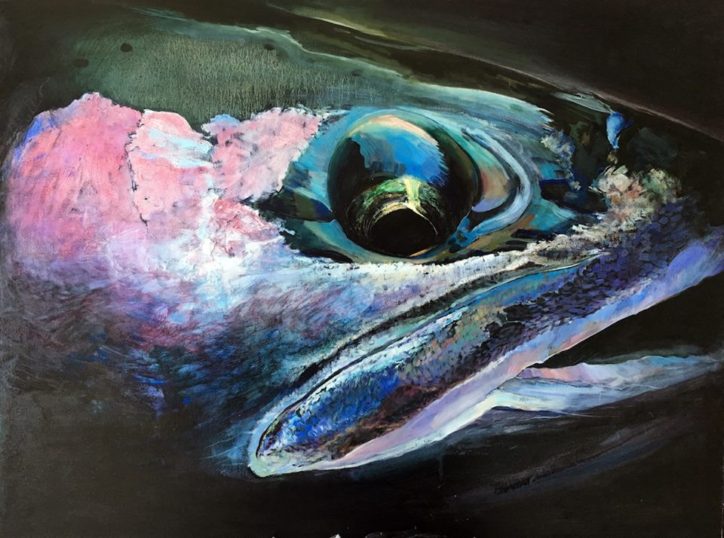
(Steelhead. 2018. Dmitry Potapov. Canvas oil painting)
Salmonidae is the only family that belongs to the Salmoniformes order, which, according to one of the classifications, belongs to the Protacanthopterygii superorder, also comprising the following orders: Argentiniformes (representatives inhabit the Adriatic Sea), Esociformes (representatives inhabit the fresh waters of the Balkan and Apennine Peninsulas), and Osmeriformes (inhabitants of other regions).
The Salmonidae family comprises the following subfamilies: Salmoninae, Coregoninae and Thymallinae. And here comes a new round of disputes of scientists. It’s obvious that there are much more endemic forms in the world than in the classical ichthyological works nowadays. But adriaticnature will stick to acknowledged classifications, even though there is the desire to add something and comment.
The following species of the Salmonidae family inhabit the water bodies located within the territories of the countries bordering the Adriatic Sea:

(Coregonus candidus. Photo by © M. Kottelat, J. Freyhof. ittiofauna.org)
It’s a pelagic species. The recorded maximum length is 32 cm. It feeds on planktonic crustaceans.
It’s the endemic of the following Swiss lakes: the Neuchatel and the Biel. It was released and now inhabits the following lakes: the Como (Lario), Garlate, Maggiore and other water bodies of northern Italy.
It is listed in IUCN Red List as a vulnerable species (VU).
European whitefish (Coregonus lavaretus).

(European whitefish. Photo © russfishing.de)
It’s a schooling pelagic species. The recorded maximum length is 73 cm. The maximum weight is 10 kilograms. It feeds on planktonic crustaceans and small fishes.
It’s the introduced species that inhabits the following lakes: the Como (Lario), Garlate, Maggiore and other water bodies of northern Italy. It was released in the water bodies of Croatia, in particular, the Peruća Lake as well.
It is listed in IUCN Red List as a vulnerable species (VU).
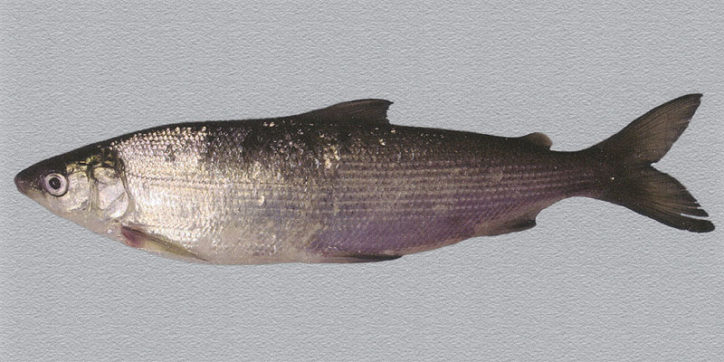
(Coregonus macrophthalmus. Photo by © M. Kottelat, J. Freyhof. ittiofauna.org)
It’s a pelagic species. The recorded maximum length is 30 cm. It feeds on zooplankton and insects.
Initially, it’s the endemic of Lake Constance (Austria, Germany, Switzerland). It was released and now inhabits the following lakes: the Como (Lario), Maggiore and other water bodies of northern Italy.
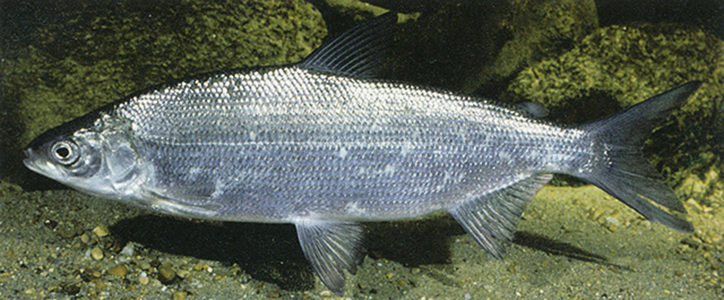
(Peled. Photo by © Andreas Hartl. fishbase.org)
It swims in different layers of water in lakes. Sometimes, it enters pre-mouth areas. The recorded maximum length is 50 cm. The maximum weight is 5 kilograms. It feeds on zooplankton, sediment dwellers, including crustaceans, maggots, algae, sometimes it picks up insects from the surface of the water.
It was released in the water bodies of Croatia, in particular, the Peruća Lake. However, there are no data on successful acclimatization and reproduction in new conditions after stocking.
Blaufelchen (Coregonus wartmanni).

(Blaufelchen. Photo by © coco194. fotolia.com)
It’s a lake pelagic species. It inhabits the depths of up to 60 meters. The recorded maximum length is 50 cm. It feeds on planktonic organisms, insects and small fishes.
Initially, it’s the endemic of Lake Constance (Austria, Germany, Switzerland). It was released in Lake Como (Lario), Lake Maggiore and other water bodies of northern Italy.
Grayling (Thymallus thymallus).

(Grayling. Photo by © Lubomir Hlasek. hlasek.com)
It inhabits fast-flowing rivers with a solid rocky sandy bottom and oxygenated water. It’s a schooling species. The recorded maximum length is 60 cm. Specimens up to 30 cm long are more common. The maximum weight is 6.7 kilograms. It feeds on insects, nymphs, worms, crustaceans and small fishes.
It inhabits submontane and mountain rivers of Albania, Bosnia and Herzegovina, Italy, Slovenia, Montenegro and Croatia.
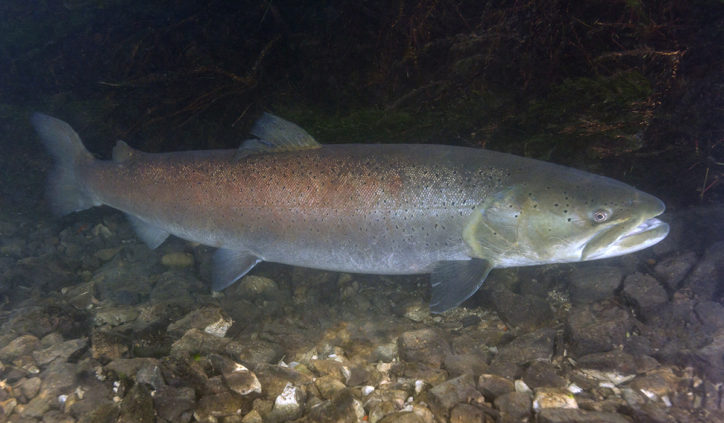
(Huchen. Photo by © Liquid Art. wikipedia.org)
It inhabits fast-flowing rivers and oxygenated water. It prefers to swim in deep areas with calmer water. The recorded maximum length is 150 cm. Specimens up to 70 cm long are more common. The maximum weight is 52 kilograms. Juveniles feed on invertebrates. Full-grown fish feed on fishes, as well as amphibians, reptiles, small mammals, and waterfowl.
It inhabits submontane and mountain rivers of Bosnia and Herzegovina, Slovenia, Montenegro and Croatia. Attempts of acclimatization have been made in Italy.
It is listed in IUCN Red List as an endangered species (EN).
Rainbow trout (Oncorhynchus mykiss).
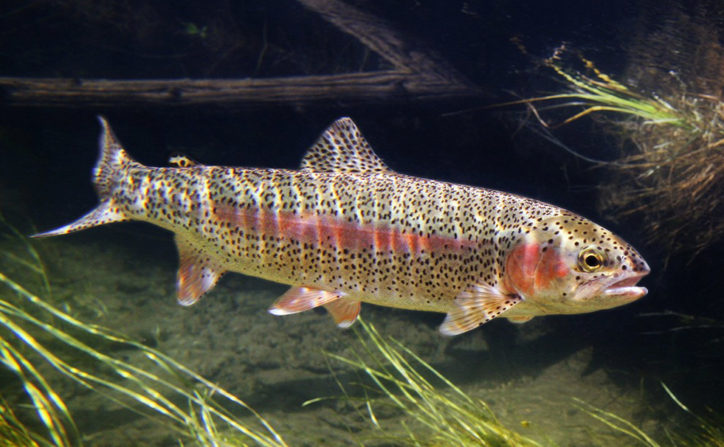
(Rainbow trout. Photo © fisheyeguyphotography.com)
Initially, it’s the endemic of the Pacific Ocean basin. It inhabits fast-flowing rivers and lakes with cool water. The recorded maximum length is 122 cm. Specimens up to 60 cm long are more common. The maximum weight is 25.4 kilograms. It feeds on invertebrates and fishes.
It’s an invasive species. It acclimatized and inhabits rivers and lakes of Albania, Bosnia and Herzegovina, Italy, Slovenia, Croatia and Montenegro.
Summer trout (Salmo aphelios).
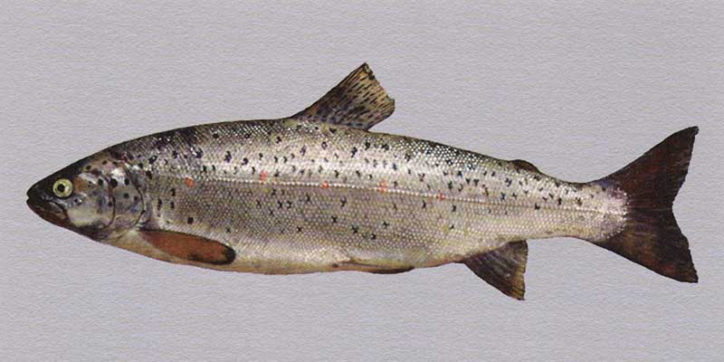
(Summer trout. Photo by © M. Kottelat, J. Freyhof. ittiofauna.org)
The recorded maximum length is 40 cm. It feeds on zooplankton and small fishes. It prefers to swim near the bottom.
It’s the endemic of the eastern part of Lake Ohrid (Albania, Macedonia). It’s a rare species.
Struga trout (Salmo balcanicus).

(Struga trout. Photo © ittiofauna.org)*
The recorded maximum length is 40 cm. It feeds on zooplankton and small fishes.
It’s the endemic of the north-western part of Lake Ohrid (Albania, Macedonia). It enters the pre-mouth areas of the rivers. It’s a rare species.
It’s on the verge of going extinct because of the construction of dams on rivers with natural spawning grounds.
*adriaticnature apologizes over the photo of Salmo balcanicus from some “restaurant”. This is the only available high-quality photo that could be found.
Сarpione del Garda (Salmo carpio).
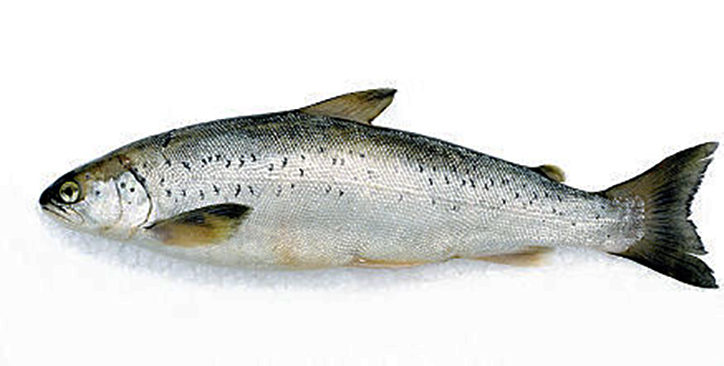
(Сarpione del Garda. Photo © ilmaredamare.com)
It’s a pelagic lake species. It inhabits the depths of 100-200 meters. The recorded maximum length is 70 cm. Specimens up to 35 cm are more common. The maximum weight is 5 kilograms. It feeds mainly on zooplankton.
It’s the endemic of Lake Garda (Italy). Attempts to release it in other lakes in Italy are being made.
It is listed in IUCN Red List as a species remaining in critical condition (CR).
Northern Italian brook trout (Salmo cenerinus).

(Northern Italian brook trout. Photo by © J. Schoffmann. ittiofauna.org)
It inhabits fast-flowing rivers and oxygenated water. The recorded maximum length is 80 cm. Specimens up to 40 cm long are more common. Juveniles feed on aquatic insects, invertebrates and fishes.
It is found in submontane and mountain rivers of northern Italy and southern Slovenia, as well as in the basin of the Po River (Italy), alpine and subalpine lakes.
Mediterranean trout (Salmo cettii).
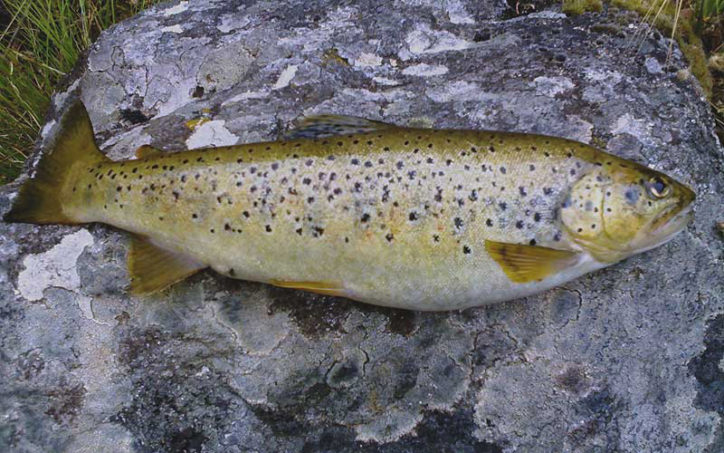
(Mediterranean trout. Photo by © Salvatore Delogu. ittiofauna.org)
It inhabits fast-flowing rivers and oxygenated water, as well as some lakes. The recorded maximum length is 40 cm. It feeds mainly on bottom insects.
It’s a rare inhabitant of southern and central Italy. It is found in Lake Posta Fibreno and the Fibreno River, some rivers of the Emilia-Romagna region. Attempts are being made to restore the population in the Tuscany region (Italy). It inhabits some rivers of Sardinia and Corsica.
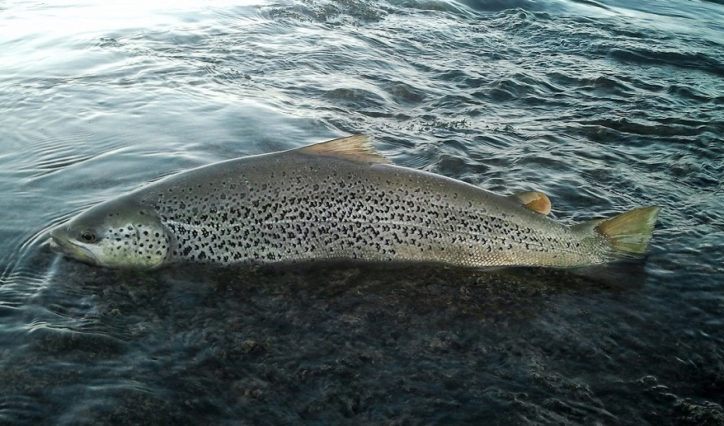
(Zubatak trout. Photo by © marcony. varalicar.com)
It inhabits lakes and rather large fast-flowing rivers, as well as oxygenated water. The recorded maximum length is 88 cm. It feeds on bottom organisms and fishes.
It’s a rare inhabitant of the lower part of the Neretva River (Bosnia and Herzegovina, Croatia), the Cetina River (Croatia), the Hutovo Blato River (Croatia, Bosnia and Herzegovina), the Morača River and possibly the Zeta River (Montenegro). It swims upstream the latter rivers in the spring-summer period from Lake Skadar (Montenegro, Albania), where it winters in deep areas.
Balkan brook trout (Salmo farioides).
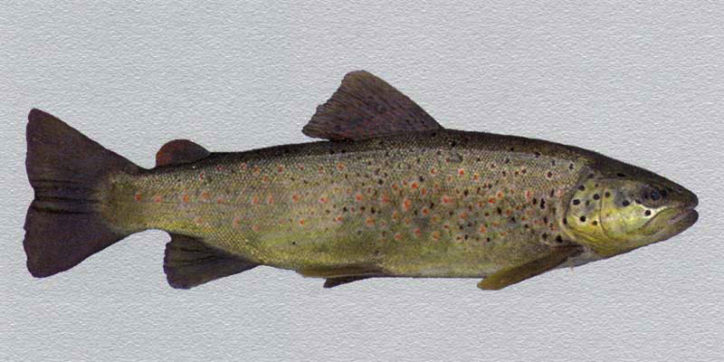
(Balkan brook trout. Photo by © B. Delling. ittiofauna.org)
It inhabits small fast-flowing rivers, oxygenated water. The recorded maximum length is 30 cm. It feeds mainly on bottom invertebrates. It may be a hybrid of native inhabitants of rivers.
It’s a rare inhabitant of the rivers of Albania, Bosnia and Herzegovina, Italy, Croatia and Montenegro.
Fibreno trout (Salmo fibreni).
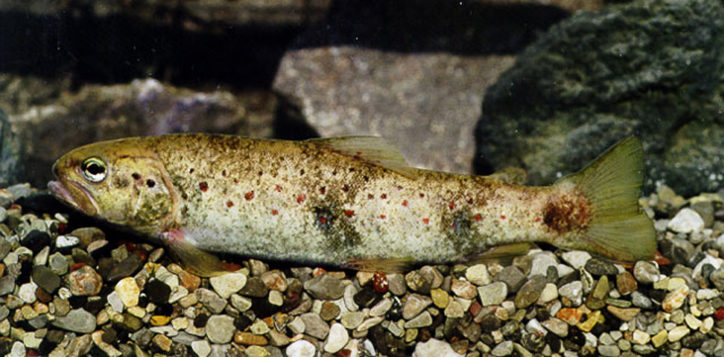
(Fibreno trout. Photo by © Johannes Schöffmann. fishbase.org)
The recorded maximum length is 19.5 cm. It feeds on insects.
It’s the endemic of a small Lake Posta Fibreno (province of Frosinone, Lazio, Italy). Occasionally, it enters its tributaries.
It is listed in IUCN Red List as a vulnerable species (VU).
Black Sea salmon (Salmo labrax).
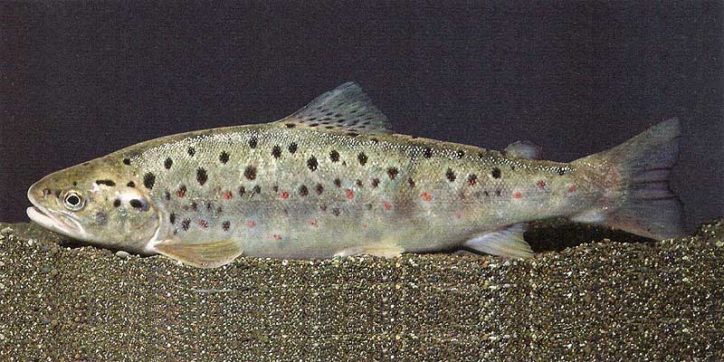
(Black Sea salmon. Photo by © M.Kottelat, J. Freyhof. ittiofauna.org)
The recorded maximum length is 75 cm. It’s the inhabitant of the Black Sea basin, in which it generates a sea form. Besides, it generates lake and river forms. It feeds on invertebrates and fishes.
It’s a rare inhabitant of European freshwater bodies. In particular, it inhabits the Lim River and Lake Plav (Montenegro).
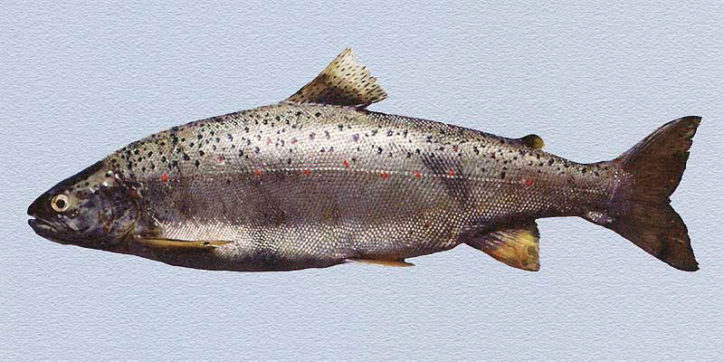
(Ohrid trout. Photo by © M. Kottelat, J. Freyhof. ittiofauna.org)
The recorded maximum length is 76 cm. The maximum weight is 6.5 kilograms. It feeds on zooplankton and fishes.
It’s the endemic of the eastern part of Lake Ohrid (Albania, Macedonia). It enters the tributaries of the lake.
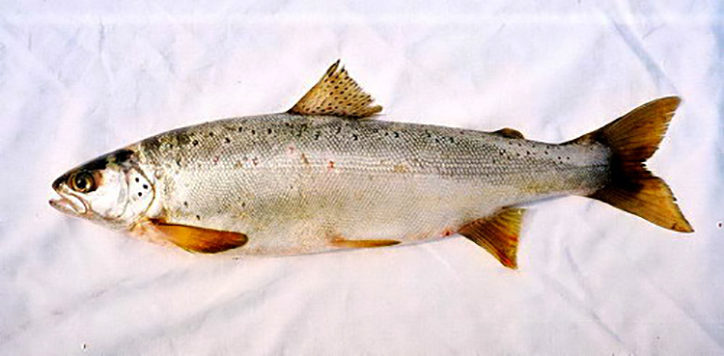
(Salmo lumi. Photo © visana.rs)
The recorded maximum length is 38 cm. It feeds mainly on zooplankton.
It’s a rare species, endemic of the northern and western parts of Lake Ohrid (Albania, Macedonia).
Marble trout (Salmo marmoratus).
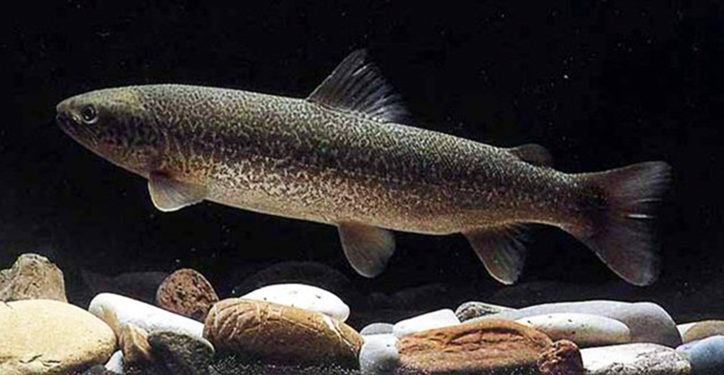
(Marble trout. Photo © neretva-trout.blogspot.com)
It inhabits fast-flowing oxygenated rivers. Besides, it is found in lakes with tributaries. The recorded maximum length is 120 cm. The maximum weight is 50 kg. It feeds on zooplankton, insects, fishes.
It’s the inhabitant of northern tributaries of the Po River, as well as the Adige, Brenta, Piave, Tagliamento and Livenza river basins (Italy), the Soča river basin (Italy, Slovenia), the Neretva river basin (Bosnia and Herzegovina, Croatia), the Morača river basin (Montenegro) and Lake Skadar (Albania, Montenegro).
Montenegro trout (Salmo montenigrinus).
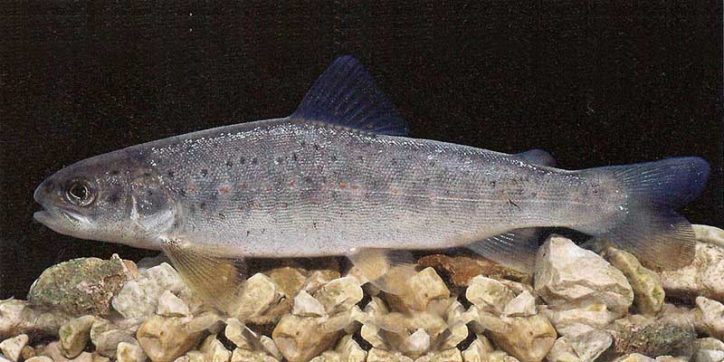
(Montenegro trout. Photo by © M. Kottelat, J. Freyhof. ittiofauna.org)
It inhabits fast-flowing oxygenated parts of rivers. It often swims close to small waterfalls. The recorded maximum length is 26 cm. It feeds on zooplankton and insects.
It’s the endemic of the Morača River basin (Montenegro) and the Neretva River basin, in its upper reaches (Bosnia and Herzegovina).
Adriatic trout (Salmo obtusirostris).
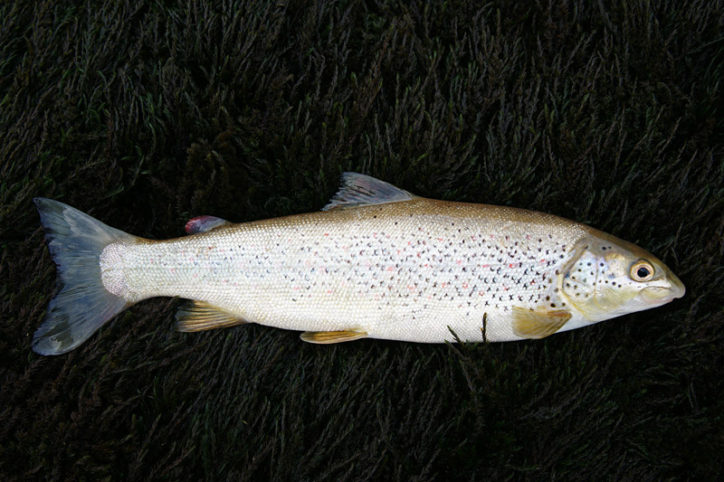
(Adriatic trout. Photo © ratschan.at)
It’s the inhabitant of submontane and mountain streams of Bosnia and Herzegovina, Croatia and Montenegro.
It is listed in IUCN Red List as an endangered species (EN).
Belvica trout (Salmo ohridanus).
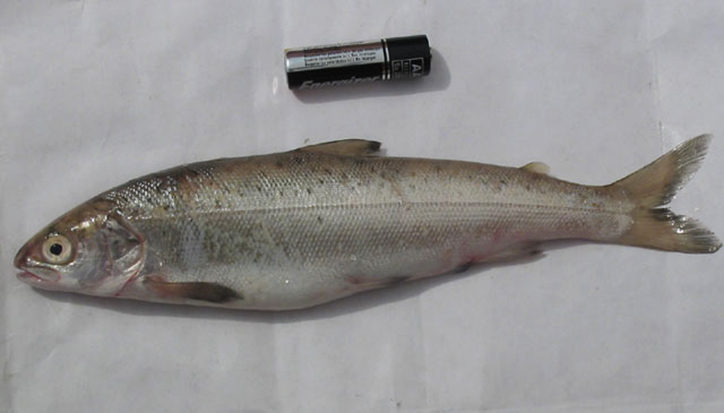
(Belvica trout. Photo by © Dragisa Mircevski. fishbase.org)
The recorded maximum length is 33.6 cm. The maximum weight is 685 grams. It feeds on invertebrates, zooplankton and small fishes.
It’s the endemic of Lake Ohrid (Albania, Macedonia).
It is listed in IUCN Red List as a vulnerable species (VU).
Prespa trout (Salmo peristericus).
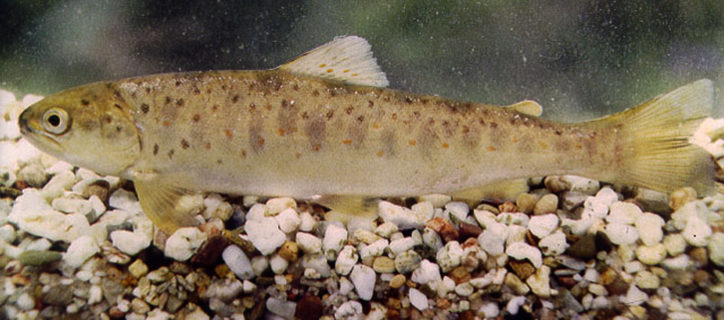
(Prespa trout. Photo by © Johannes Schöffmann. fishbase.org)
It’s the inhabitant of small fast-flowing rivers and oxygenated water. The recorded maximum length is 35 cm.
It’s the endemic of tributaries of Lake Prespa (Albania, Greece, Macedonia).
It is listed in IUCN Red List as an endangered species (EN).
Rhône trout (Salmo rhodanensis).
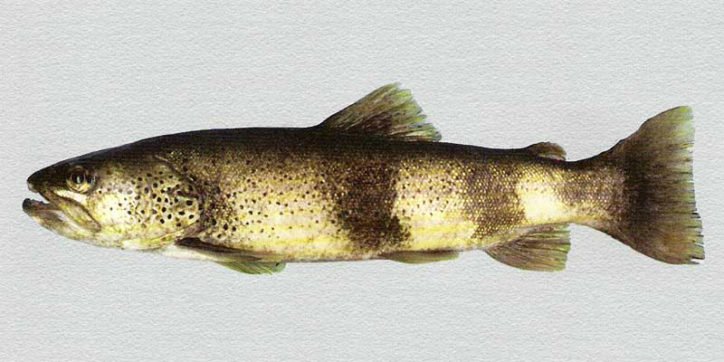
(Rhône trout. Photo by © M. Kottelat, J. Freyhof. ittiofauna.org)
The recorded maximum length is 80 cm. It feeds on invertebrates, fishes and amphibians.
It’s a rare species, inhabiting the Rhône River and its tributaries (Italy, France).

(Zeta trout. Photo by © M. Kottelat, J. Freyhof. ittiofauna.org)
The recorded maximum length is 30 cm. It feeds mainly on invertebrates and insects.
It’s a rare inhabitant of the upper reaches of the Zeta, the Morača and their tributaries (Montenegro).

(Brown trout. Photo by © Lubomir Hlasek. hlasek.com)
Juveniles swim in rivers , large individuals inhabit lakes (“lake trout”) and the coastal part of seas at depths of up to 28 meters, usually up to 1-2 meters, swimming upstream to the river for spawning. The recorded maximum length is 140 cm. Specimens up to 70 cm long are more common. The maximum weight is 50 kilograms. It feeds on insects, mollusks and fishes.
It’s the inhabitant of the rivers and lakes of Albania, Bosnia and Herzegovina, Slovenia, Croatia, Montenegro and Italy. It generates many subspecies and forms.
Visovac’s trout (Salmo visovacensis).

(Visovac’s trout. Photo © npkrka.hr)
The recorded maximum weight is 14 kilograms. Specimens up to 2 kilograms are more common. It feeds on insects and fishes.
It’s the endemic of Lake Visovačko and the Krka River (Croatia). The issue of Salmo visovacensis being a separate species is still in question.
Zrmanja trout (Salmo zrmanjaensis).
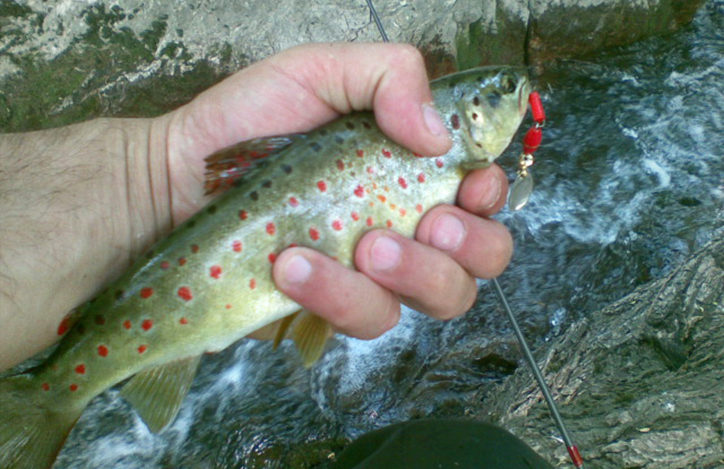
(Zrmanja trout. Photo by © marinko. bih-ribolov.com)
It’s the endemic of the Zrmanja River (Croatia). The issue of Salmo zrmanjaensis being a separate species is still in question.
Arctic char (Salvelinus alpinus alpinus).

(Arctic char. Photo by © LfL, IFI. destepti.ro)
The species has both anadromous and nonmigratory forms, constantly inhabiting lakes and rivers. It inhabits the depths of up to 70 meters. Usually, it swims near the bottom. The recorded maximum length is 107 cm. Specimens up to 40 cm long are more common. The maximum weight is 15 kilograms. It feeds on planktonic crustaceans, amphipods, mollusks, insects and fishes.
It’s the inhabitant of lakes and, more rarely, rivers of Bosnia and Herzegovina (Lake Great Pliva, etc.), Italy (water bodies of the province of Trento, Lombardy region, Lake Lago Maggiore, etc.), Slovenia (Lake Bohinj, etc.), Montenegro (Biogradsko Lake, Black Lake, etc.), Croatia (Plitvice Lakes, etc.). It’s an invasive species.
Brook trout (Salvelinus fontinalis).
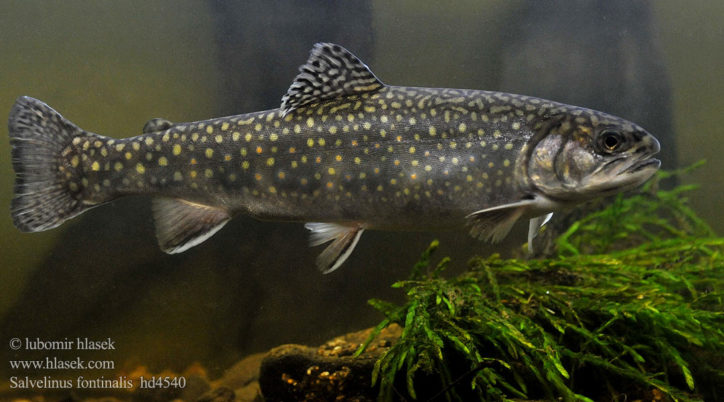
(Brook trout. Photo by © Lubomir Hlasek. hlasek.com)
It inhabits cool rivers and streams with oxygenated water, as well as small and medium-sized lakes. Some forms may swim downstream into the sea. The recorded maximum length is 86 cm. Specimens up to 30 cm long are more common. The maximum weight is 8 kilograms. It feeds on worms, crustaceans, insects, mollusks, fishes and amphibians.
It’s the inhabitant of the rivers and lakes of Albania, Bosnia and Herzegovina (the upper reaches of the Bosna River, etc.), Italy (water bodies of the regions of Valle d’Aosta and Lombardy, the provinces of Trento and Bolzano, etc.), Slovenia (tributaries of the Sava River, etc.), Montenegro (it was released in Lake Skadar – there are no data on its successful acclimatization), Croatia (Plitvice Lakes, tributaries of the Neretva River). It’s an invasive species.

(Lake char. Photo by © H. Chaumeton, A. Mondadori. ittiofauna.org)
It inhabits high altitude lakes. The recorded maximum length is 75 cm. It feeds on insects, crustaceans, fishes, and other bottom fauna.
It’s the inhabitant of the lakes of the province of Trentino – Alto Adige, the region of Lombardy and others (Italy).